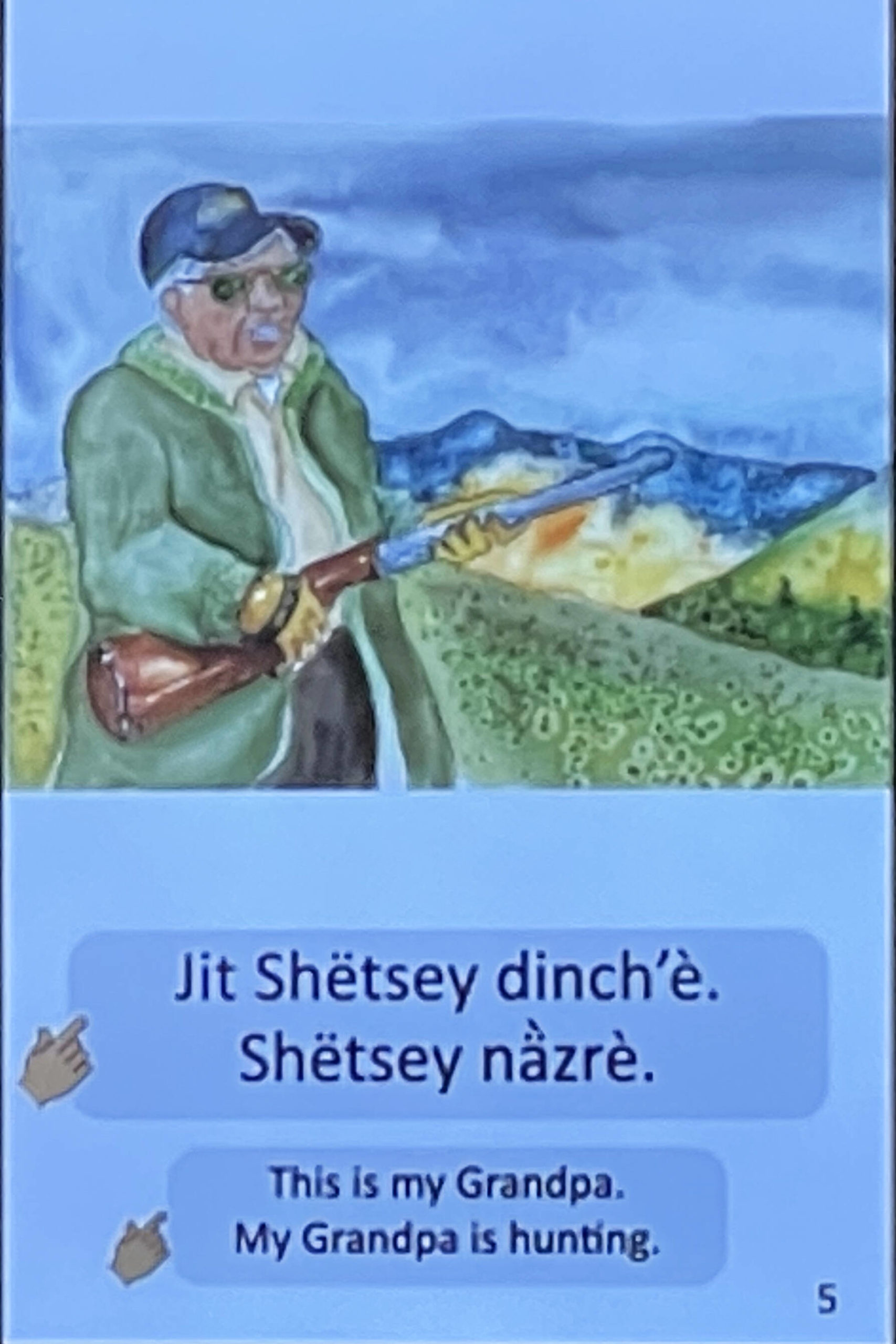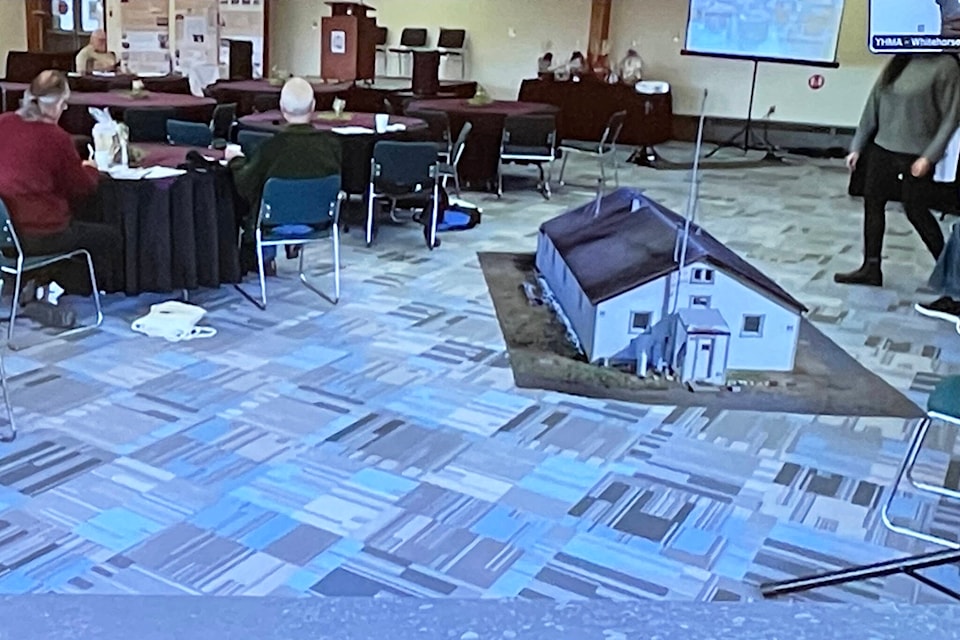What do storybooks, UFOs, paleontology and parks have in common?
Add in a smattering of Yukon history that extends to Herschel Island and shifts the usual gold rush renderings into stories of people and cultures nearly lost — and you find only a portion of the Yukon Historical and Museums Association’s conference from Oct. 4 to 6, which was broadcast and presented from Dawson City, Whitehorse and Tagish.
Titled The Pleistocene to the Present, the scope and breadth of the presentations showcased the ongoing work to re-define, appreciate and represent the history and pre-history of the Yukon territory.
Yukon’s official story laureate, Michael Gates, opened the conference with examples of how Yukon’s identity has been defined by others — people who do not live here, who missed the mark in so many ways. They then made decisions on behalf of Yukoners without knowing the land and the people for whom they had decided.
After citing a letter addressed to Dawson City, Yukon, Alaska and the Northwest Territories, Gates listed the outsiders who contributed to research, names like Harrington and Cruikshank, but admitted that research into Yukon history and identity was mainly conducted by “predominately white male documentarians.”
Only recently have First Nation knowledge keepers, himself and other local people been recognized as residents with expertise. Now this expertise is supported by organizations, First Nation heritage departments, and governments. The conference organizers set out to tell the stories of the work going on behind the projects around the territory.
Ron Chambers, a member of the wolf clan and citizen of Champagne Aishihik First Nation, followed Gates’ talk, speaking of the importance of multiple perspectives and how that shapes the interpretation and recording of different events. He was surprised to learn his nieces had been aboard a sternwheeler when it hit the rocks at Five Finger Rapids, but they did not talk or recall the event in conversations because that was the boat taking them away to residential school in Dawson City.
Chambers told a long-ago story of Johnny Fraser, telling him how the tall “roshers” with their height and bushy beards and how they might have been interpreted as sasquatches, when he was describing Russian traders. He quoted southeast Alaskan newspaper dispatches that disparagingly wrote how Indigenous people had a nose to track deer, but had no sense to find gold. Later in the program, it was learned that Tr’ondëk Hwëch’in regarded spruce pitch as gold to their people. Each to their own perspective, set by time and place.
New technologies utilized
Conference organizers sought to include the new technologies available to preservers of history and story. They mentioned Murray Lundberg’s Facebook page, Yukon’s history and abandoned places, with its 17,000 followers. There were presenters creating podcasts and websites alongside book authors.
Presenters from Yukon’s heritage branch used drone images on Herschel Island and the north Yukon shoreline as the basis for photographic overlays showing the loss of land to ocean encroachment over time. They were also able, due to digital imaging, to project three-dimensional representations of old buildings on the floor of conference room.
A story book, titled Shëtsey (My Grandfather) developed from Percy Henry’s life with Georgette McLeod, with drawings by Sue McCallum, was painstakingly created from photographs and conversations with Elder Henry. The story is augmented by audio so a reader can hear and repeat the disappearing Hän language.

Another presentation, from the team of Parks Canada and Yukon First Nation heritage people who developed new interpretative exhibits for the SS Klondike, were created with an audio component as well, so that people could hear the Indigenous voices that once lived up and down the river. The project took time, as the seven Indigenous communities along the Yukon River were all contacted and involved in a representation of riverboat history and how it impacted the people who lived on its banks.
Conference presentations were made from Whitehorse, the Dänojà Zho Cultural Centre in Dawson and the Tagish recreation hall, where four people from the Tagish Nation spoke about their differing origin stories. As people named their parents and grandparents and relations, an audience member recognized for the first time ever, that they were related. Other bits of information surfaced, that not only did First Nation women lose their “Indian status” if they married a white person, but also that if a Northwest Mounted Police officer married a First Nation woman, he would have to resign from the force. Tagish was one of the first Northwest Mounted Police posts in the Yukon, and the marriages and rules meant that Annie Austin, as she said, didn’t become “an Indian until 1985”.
Audience members also heard about a full rewrite of the Palace Grande’s historical presentation for visitors, once colonial and racist, which was rewritten as a dialogue for conversation, titled Red Serge to Red Tape. The new version is a critical look at the effects of colonization and stands as another example of Parks Canada efforts to decolonize their historical views.
Stories about art-making were incorporated into the presentation agenda with talks on traditional dream-connected artwork and its importance to storytelling by Dawson artist Darcy McDiarmid, as well as a presentation by Dr. Ukjese Van Kampen, another northern Tutchone artist.
The history of the Yukon is not a single narrative, it is composed of many histories viewed from many perspectives — Jewish, black and Asian, and francophone. Some were presented and the hidden history panels created by the historical association were on display in the Tagish hall.
Chambers said he came to the conference expecting to deliver his talk, and leave shortly after. Instead, each subsequent presentation looked so interesting, he stayed the whole three days.
Contact Lawrie Crawford at lawrie.crawford@yukon-news.com
